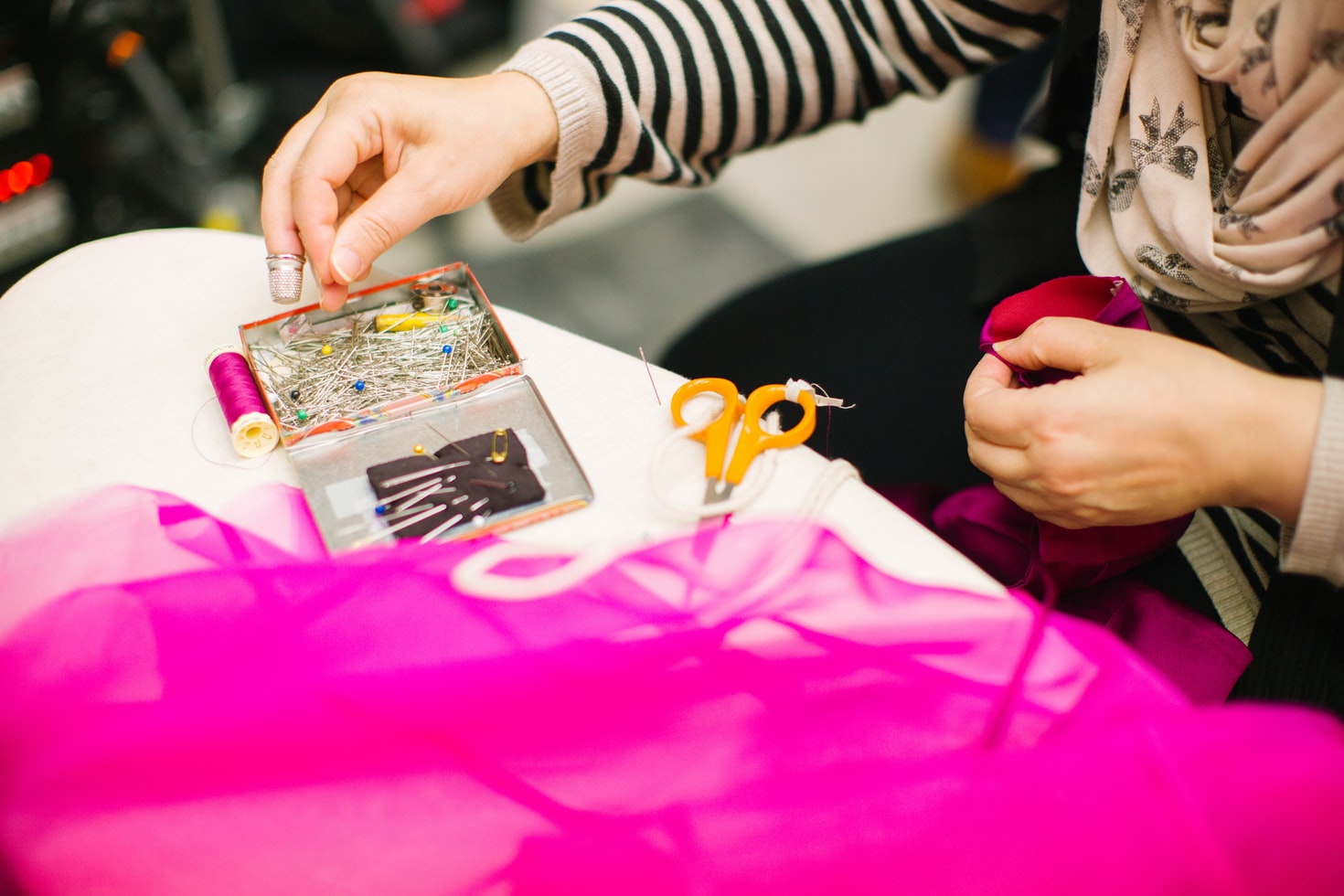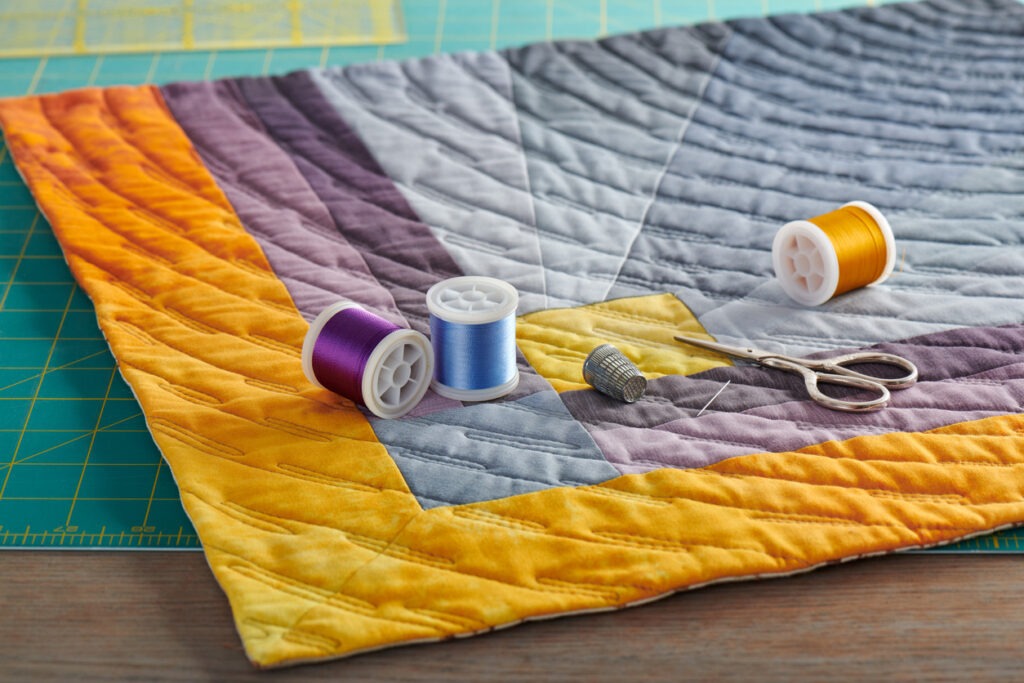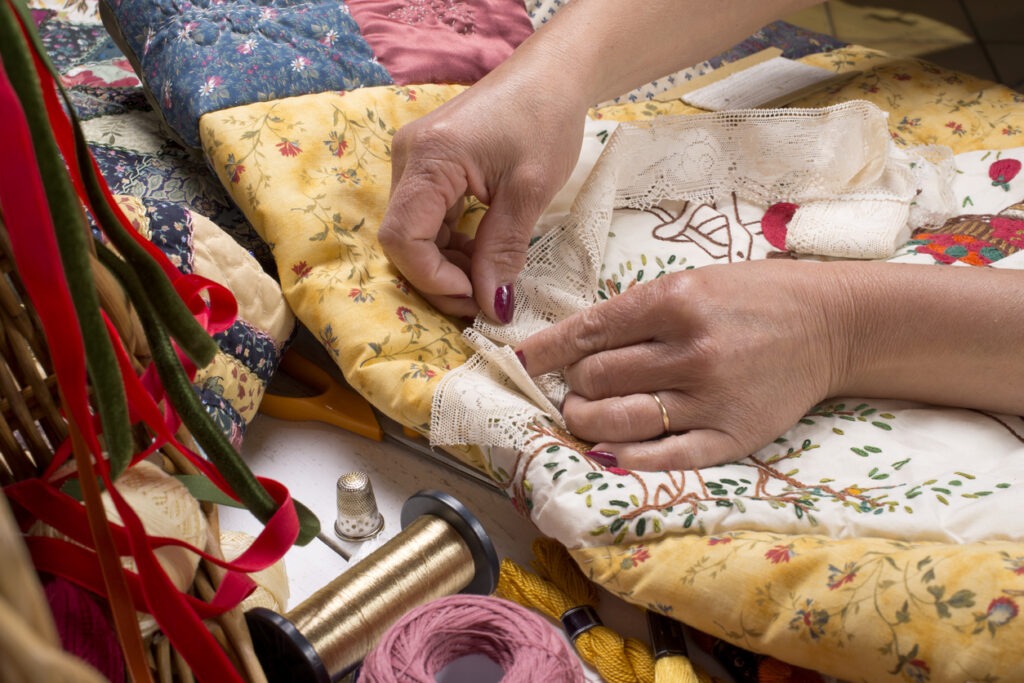Quilting is a fantastic activity for anybody seeking a new hobby. It has soothing and therapeutic properties and is an excellent technique to repurpose items to create aesthetically pleasing home environments.
Often, quilting is regarded to be a difficult talent to master and requires specialized instruction. However, with good guidance and correct instruction, everyone can learn to quilt.
If you’re looking for a convenient way to learn to quilt, you may do so online. The best thing about these online quilting courses is that they include videos that may be seen infinite times and give learners lifelong access.
Here are some of the finest quilting lessons available online.
National Quilters Circle
Since its inception in 2010, the National Quilters Circle has established itself as a go-to resource for quilters of all experience levels.
The site’s extensive video library, which includes more than 300 instructional films, may teach you how to apply batting properly or employ contemporary methods like image transferring. Approximately 200 of these films are entirely free.
New online quilting courses are constantly expanding the video archive of the National Quilters Circle. Courses range from the simplest, like “Beginner Quilting,” to the most sophisticated, like “Learning to Stitch Free Motion Script,” both of which cost roughly $3.
Academy of Quilting
The Academy of Quilting was established in 2008 with an aim to assist quilters in honing their skills and knowledge. Currently, it has different knitting specialists from across the world. Nearly 90 classes are offered, including some good courses on recycling scraps of fabric and other textiles.
The courses can be taken on-demand or at a predetermined time. Scheduled lessons last from four to ten weeks, while on-demand options are available instantly after creating an account.
If you’re interested in learning to make a magnificent landscape quilt out of waste fabric, there are two on-demand courses available. Bits & Pieces Scrap Fabric Landscape costs around $53, and the class takes approximately 10 weeks to complete. The Great Scrap Quilt costs around $74 and takes about 12 weeks to finish.
Creative Bug
The creative Bug is a low-cost, membership-based educational facility, but unlike other skill-sharing programs that cover many subjects, all solely devoted to crafts. Current students rate all courses, and there is an interactive session where you may communicate with professors or classmates.
The mother-daughter combo, Sue and Ashley Nickels, gives an enormously popular, one-hour session on modern and traditional quilting that includes downloadable designs. Quilting Tools 101, by Liza Lucy, is a great starting point for those new to the craft and want to learn more about what tools they’ll need.
Creative Bug believes that the arts should be accessible to everyone. Thus a portion of each membership goes to nonprofits that promote art education.
After the free one-week trial period, Creative bug membership costs roughly $10 per month.
Types of quilting
There are many different types of quilting. Here are some for your perusal.
- Amish Quilts- Amish quilts are typically made with traditional colors, blocks, or patterns. Nature elements, such as leaves and flowers, are frequently incorporated into the quilt patterns.
- Appliqué Quilts- Applique quilts are created by sewing small pieces of cloth on top of a larger piece of fabric. The quilter can use any type of form they choose, which is appealing. It’s almost as if you’re painting a picture.
- Autograph Quilts- These were produced to remember a major occasion, such as the death of a family member, and were also known as Friendship quilts. The blocks were created in a variety of patterns, but always included a muslin piece where someone might write anything and sign their name.
- Hawaiian Quilt Patterns- These quilts feature symmetric motifs that are usually formed inwards outwards. Floral and tropical images are typically created utilizing applique techniques.
- Charm Quilts- A charm quilt is one that utilizes a new fabric for each component and does not use the same fabric again. This style of quilt can contain thousands of pieces of cloth if they are wide enough and the individual charms are small enough.
- Crazy Quilts- Silks, velvet, and other high-quality textiles were utilized. The garments were embellished with intricate embroidered sewing. Antique crazy quilts are difficult to find and must be handled with extreme caution due to the delicate fabrics utilized.
- Paper Pieced Quilts- Paper piecing is fantastic since it helps you to achieve absolutely crisp points while also allowing you to create some incredible shapes and motifs.
- Memory Quilt- Memory quilts are usually constructed for important occasions using things from a loved one. These can be used to commemorate births, graduations, special birthdays, or other significant life milestones.
Benefits of quilting
- Quilting helps to reduce stress- Quilting uses repeated action to trigger our parasympathetic nervous system. This, in turn, calms our body’s fight or flight response. Stress and other intense emotions are regulated. Quilting is a very powerful therapy for those of us who face daily stress in our everyday lives.
- It allows you to disconnect from the world today- The actual act of quilting, from selecting fabric to cutting and sewing blocks together, is time set apart that allows you to disengage and instead focus on creating. Quilting’s atmosphere also helps you focus on finishing tasks rather than reducing your attention span, which is important because quilting is an art that takes your whole attention.
- Improving cognitive skills- While you quilt, your mind stays alert. The essential math and calculations will substantially boost your cognitive powers. This is a good exercise for the brain indeed.
- Improve your self-confidence- As each quilt you complete, your confidence grows, and this practice is a great way to boost your self-esteem. Every time you make a quilt that incorporates a technique you’ve never tried before; you learn new abilities and gain confidence. It’s a good practice if you want to build your self-confidence.
- Good business opportunities- Quilting is recognized as a highly profitable enterprise. There are various components of quilting that can assist you in running a successful business. You can manufacture blankets, toys, bed decorations, tablecloths, bags, wallets, wall decorations, table clothes, and dining decorations and many more that can turn into a profit and help in your day to day living.
- Allows waste to be recycled- Another significant benefit of learning to quilt is the capacity to transform garbage into usable goods. You just need to be creative and resourceful so that you can help the environment too.
- It provides a quilting community- It offers a safe and pleasant atmosphere in which to communicate with individuals who share your artistic interests. It is a good activity for people who feel lonely because through quilting you can meet different individuals that has the same interest you have and it will make you feel that you belong to a certain group.
- Create your own presents– You can surely make more memorable gifts or presents by learning to quilt. Wedding gifts, simple canvas totes, table cloths, and other items with quilted accents are some unique and innovative gift ideas. The receiver will definitely appreciate your gift since you are the one who created it and of course you exerted an effort to it.
Interesting Facts about Quilting
- The term “quilt” comes from the Roman word culcita, which means “filled sack.”
- The AIDS Memorial Quilt is the world’s largest quilt. It is 54 tons in weight. The world’s largest historical quilt, on the other hand, may be found at Antler, North Dakota.
- The first depiction of quilting was unearthed in Egypt, in the form of an ivory figurine of a pharaoh dressed in quilted clothes, circa. 3400 BC.
- Quilting was introduced to the Americas by European settlers, and the earliest known quilt constructed in America dates from 1704.
- Quilting bees began in the 1800s in the Midwest of the United States. Due to a lack of neighbors, there was a need for socialization. It brought ladies together to complete quilts and create new acquaintances.
- Jonathan Holstein opened the first quilt display in a major museum in 1971. It was named “Abstract Design in American Quilts,” and it helped catapult the craft into a new realm of admiration and criticism.
- In the nineteenth century, it was usual in some parts of the United States for a girl to choose from a variety of quilts before getting engaged. Twelve would be made for everyday use, and one would be made to showcase her quilting skills and would be placed on the bed she and her husband would share.
- Global Quilting Day is celebrated on March 18, 2017. Also, March is National Quilting Month.
- A Civil War-era quilt acquired for $254,000 in 1991 was the most expensive quilt ever sold.
- In 2020, the average quilter is a retired woman in her 60s who owns four distinct sewing machines.
- There are roughly 21 million quilters in the United States, with an average age of 62. Quilting generates a $3.7 billion industry in the United States each year.
- Quilts are classified into three types: simple or whole cloth quilts, appliqué quilts, and patchwork quilts.
Bottom Line
If this is your first time quilting and you’re unsure of where to begin, the online quilting courses above will help you get started. They are excellent options for your stitching needs, each with highly licensed and experienced instructors. You may always enroll in any of the courses and learn everything there is to know about basting.



